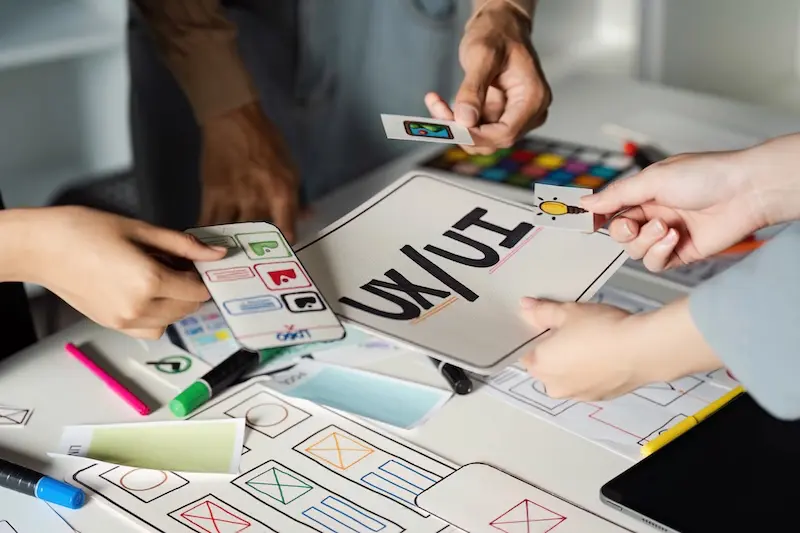Multilingual UX design involves far more than swapping out words from one language to another; it’s a careful, cross-cultural balancing act. As digital products reach new audiences across the globe, design teams are discovering that language is only one part of the equation.
The real challenge lies in creating intuitive, accessible, actionable and emotionally resonant experiences that work for everyone, regardless of where they live, what language they speak, or how they navigate an interface.
So what’s making multilingual UX design so tricky, and what can teams do to get it right?
Why multilingual UX design is uniquely complex
Designing user experiences that cross linguistic and cultural boundaries isn’t just about translation. In practice, it touches nearly every element of the product, from layouts and typography to user flows and brand identity.
Text expansion and layout stress
One of the most immediate headaches for designers working on multilingual projects is text expansion. A crisp little button labeled “Log in” in English might triple in size when translated into German, Italian, or Finnish. Multiply that across a whole interface, and things start to stretch, break, or disappear altogether.
It’s why fixed-width containers and pixel-perfect grids can cause more harm than good. Instead, dynamic, auto-resizing components and fluid layouts give your interface the flexibility it needs to hold multiple languages without collapsing under pressure.
Multilingual UX design must be script-aware
And it’s not just longer words. When right-to-left languages like Arabic or Hebrew come into play, entire layouts need to be mirrored. Navigation patterns flip, icons must point the other way, and typographic choices suddenly take on a whole new level of complexity.
Meanwhile, for non-Latin scripts like Thai, Chinese or Hindi, the technical infrastructure needs to support proper character rendering and spacing. These aren’t just aesthetic concerns; they affect usability, legibility, and trust.
It’s not just what you say – it’s how you say it
A common misstep in multilingual UX design is assuming that translating words is enough. But direct translations, even when technically accurate, can still land flat – or worse, be misunderstood.
Cultural nuance plays a major role here. Imagery, colors, symbols, and even tone of voice all carry different meanings across different cultures. The cheery thumbs-up icon? Harmless in one region, offensive in another. This is where localization stops being a process and becomes a mindset.
Brand consistency vs. local flexibility
Another subtle tension in multilingual UX design lies in brand expression. Global companies want a consistent brand experience, but consistency is not always about sameness.
Adapting for local markets doesn’t mean diluting your identity. It means expressing that identity in ways that resonate within different cultures and environments. That might mean adjusting colors, shifting imagery, or tweaking tone. The best brands know where to flex and where to hold firm.
The hidden layers of multilingual UX design
Effective multilingual UX design extends well beyond text. Dates, currencies, units of measure, legal disclaimers, and address formats all need to align with local norms and expectations.
Miss these details, and you risk creating friction in key moments of the user journey, just when you want to build trust and engagement.
It’s also worth noting that legal compliance isn’t optional. Data protection laws, age-gating requirements, or even mandatory disclosures vary across markets, and your UX needs to accommodate them, seamlessly and clearly.
Early planning beats last-minute firefighting
One of the clearest dividing lines between successful and struggling multilingual UX projects is when the planning starts.
Teams that plan for internationalization – aka world readiness – from the beginning save themselves a world of pain later. Retrofitting design for multilingual support is time-consuming, expensive, and often compromises the final product. By integrating localization thinking into early wireframes and content strategies, product teams can avoid costly surprises down the line.
This means making space, literally and metaphorically, for localization within the development cycle. Content writers, UX designers, and localization leads need to be in the same room (or Slack channel) from day one and collaborate along the way, both in global content operations and product supply chains.
Laying the groundwork for multilingual UX design collaboration
Multilingual UX is often a distributed effort. Different languages, different teams, different time zones. To make it work, collaboration needs the right infrastructure.
Translation management systems, cloud-based asset libraries, and shared glossaries can make or break the process. Everyone involved, from translators, engineers, QA testers, and designers, needs access to the same context at the same time.
And context is everything. A translator working in isolation is flying blind. But when they can see screenshots, content character limits, brand tone guidelines, and UX notes all in one place, quality rises, and the need for revisions is significantly reduced.
Best practices that make a real difference
Some of the most impactful steps teams can take are also the simplest, when incorporated at the outset.
- Use pseudolocalization to simulate how your UI handles text expansion/contraction and script changes before real content arrives. It’s a great early stress test for your layouts.
- Create robust glossaries and style guides for translators, designers and developers. These documents aren’t just nice-to-haves – they ensure tone, terminology, and voice stay consistent across all languages.
- Conduct regular feedback sessions with users in your target markets. Personas and assumptions are useful, but real voices are better.
- Design for accessibility from the outset. Assistive technologies must be able to navigate multilingual interfaces without barriers. This includes supporting screen readers, keyboard navigation, and clear visual hierarchies.
Building global experiences: What teams should keep in mind
For UX designers, product managers, and localization teams tasked with shaping global digital experiences, technical skills alone aren’t enough. Success in multilingual UX design depends on a deep awareness of how language, culture, layout, and context interact across markets. These aren’t just functional challenges; they’re human-centered ones that require the right mix of knowledge, foresight, and cross-cultural sensitivity.
Having the right people in the room matters from the very beginning
When teams are built with individuals who understand the nuance, from handling complex script behavior to designing for cultural relevance, projects move faster, design decisions are smarter, and global launches run more smoothly. It reduces the risk of costly rework and helps avoid the late-stage scramble to retrofit design for markets it was never meant to serve.
Product success at scale starts with team design
As companies expand into new regions, the ability to localize well and design with localization in mind has become a core competency. And that begins with recruitment. The right hire can bring fresh insight, anticipate obstacles before they surface, and connect the dots between brand, user, and market in ways that elevate the entire product experience.
Let’s build global experiences that truly work with the help of International Achievers Group
At International Achievers Group, we know that multilingual UX design isn’t just a design or localization challenge; it’s a people challenge. The success of any global digital experience depends on having the right minds behind it from the start.
For over two decades, we’ve partnered with UX leaders, product managers, and localization specialists to help build teams that truly understand what it takes to design for a global audience; teams who can anticipate complexity, collaborate across cultures, and shape products that feel right no matter where or how they’re used.
Whether you’re scaling into new markets or strengthening your internal localization capabilities, we’re here to connect you with talent who can help you get there.
If you’re looking to recruit the people who will shape your next global success, or if you’re one of those people ready for your next opportunity, we’d love to talk.
Get in touch today, and let’s make global feel local, by design.



